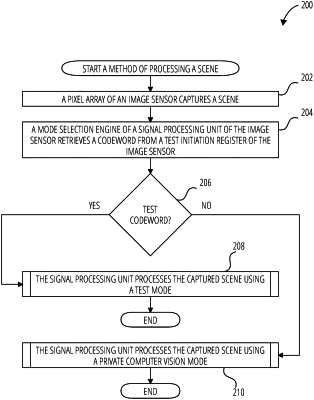| CPC G06V 20/70 (2022.01) [G06V 10/25 (2022.01); G06V 20/597 (2022.01); G06V 40/18 (2022.01); H04N 23/61 (2023.01); H04N 23/80 (2023.01); H04N 25/69 (2023.01); H04N 25/78 (2023.01); H04N 25/47 (2023.01); H04N 25/75 (2023.01)] | 24 Claims |

|
1. A signal processing unit configured to perform actions comprising:
reading a captured scene from a pixel array;
reading a value from a test initiation register;
in response to determining that the value indicates a test mode:
processing the captured scene to detect a region of interest associated with the value; and
providing the region of interest to a first interface for transmission to a host device; and
in response to determining that the value does not indicate the test mode:
analyzing the captured scene using a computer vision technique to selectively generate a signal based on the analysis of the captured scene; and
selectively providing the signal to a second interface for transmission to the host device.
|